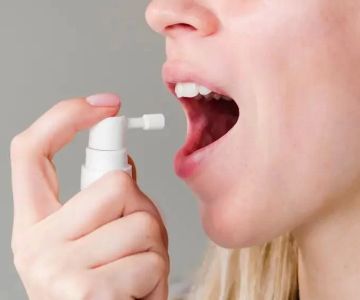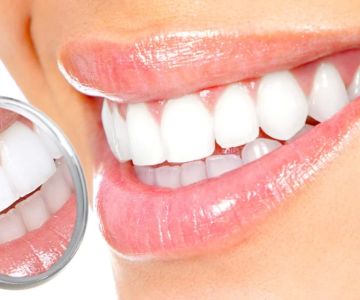 :
:- Understanding Tooth Sensitivity After Whitening Treatments
- What Causes Tooth Sensitivity During Whitening?
- How to Manage Tooth Sensitivity Effectively
- Best Products for Managing Whitening-Induced Sensitivity
- Real-Life Example: Managing Sensitivity After Whitening
Understanding Tooth Sensitivity After Whitening Treatments
Tooth sensitivity is a common side effect of teeth whitening treatments. While whitening treatments are effective in brightening your smile, they can sometimes cause discomfort, particularly in individuals with sensitive teeth. The discomfort is usually temporary but can range from mild to moderate and is typically triggered by the exposure of the tooth’s dentin due to the whitening process.
When you whiten your teeth, the active ingredients in the treatment products, such as hydrogen peroxide, penetrate the enamel and reach the underlying dentin. This can lead to temporary irritation of the nerve endings, resulting in sensitivity. For some people, this can be a significant concern, especially when consuming hot, cold, or sweet foods and beverages.
What Causes Tooth Sensitivity During Whitening?
Tooth sensitivity during or after whitening treatments can be caused by several factors:
- Enamel Erosion: Overuse of whitening products or high concentrations of active ingredients can lead to enamel thinning, which increases sensitivity.
- Existing Tooth Sensitivity: People who already have sensitive teeth or gum recession may experience heightened discomfort when whitening their teeth.
- Whitening Product Strength: Some over-the-counter whitening products may be too strong for individuals with delicate teeth, leading to irritation of the gums and dentin.
- Application Time: Prolonged exposure to whitening agents can exacerbate sensitivity, especially if the instructions are not followed correctly.
Understanding these causes can help you take proactive steps to minimize the discomfort and maintain the health of your teeth while still achieving a bright smile.
How to Manage Tooth Sensitivity Effectively
If you experience tooth sensitivity after whitening, don’t worry. There are several effective strategies you can use to manage the discomfort and protect your teeth:
1. Use Toothpaste for Sensitive Teeth: Switching to a toothpaste specifically designed for sensitive teeth can significantly reduce discomfort. These toothpastes contain ingredients like potassium nitrate or strontium chloride, which help block nerve pathways and reduce sensitivity.
2. Limit Whitening Frequency: If you notice significant sensitivity, try spacing out your whitening treatments. Instead of frequent whitening sessions, consider opting for a gentler, longer-term whitening process that causes less strain on your teeth.
3. Avoid Trigger Foods and Drinks: Immediately after whitening, try to avoid consuming hot, cold, or acidic foods and drinks. These can aggravate sensitivity in the first few days after treatment. Stick to room temperature or lukewarm options to help prevent discomfort.
4. Use a Soft-Bristled Toothbrush: Switching to a soft-bristled toothbrush can reduce further irritation to sensitive gums and teeth. Brushing gently also helps to minimize abrasion on the enamel, which can exacerbate sensitivity.
5. Consider a Desensitizing Gel: Many whitening treatments include desensitizing gels or solutions that can help to reduce tooth sensitivity. These gels can be applied after the whitening process to soothe the nerves and reduce discomfort.
Best Products for Managing Whitening-Induced Sensitivity
When dealing with sensitivity after whitening treatments, using the right products is key. Here are some of the best products to consider:
- Sensodyne Pronamel: This toothpaste is specifically formulated for people with sensitive teeth. It helps to re-mineralize enamel and protect against future damage.
- Colgate Sensitive Pro-Relief: Known for its fast relief from tooth sensitivity, this toothpaste can provide immediate comfort after whitening treatments.
- Orajel Antiseptic Mouthwash: This mouthwash contains fluoride and helps soothe irritated gums while preventing plaque buildup, which can aggravate sensitivity.
- Rembrandt Intense Stain Whitening Toothpaste: A great option for whitening and sensitivity, this toothpaste gently brightens teeth while also addressing the discomfort of sensitive teeth.
If you’re unsure which products are best for your specific needs, consider visiting Dentistry Toothtruth for expert recommendations tailored to your personal dental care routine.
Real-Life Example: Managing Sensitivity After Whitening
Take the case of Sarah, who decided to try at-home teeth whitening after noticing her smile had become dull over time. After her first whitening session, she experienced significant sensitivity, especially when drinking her morning coffee. Initially, she was concerned that her new smile wasn’t worth the discomfort, but after switching to a toothpaste for sensitive teeth and following a more spaced-out whitening schedule, she found relief. She also made sure to avoid hot drinks for the first few days after whitening and noticed a drastic improvement in her comfort levels.
This case highlights how small adjustments in your post-whitening routine can help manage sensitivity effectively. By being mindful of your teeth’s needs and choosing the right products, you can enjoy the benefits of a whiter smile without the discomfort.







 Westgate Dental Arts
Westgate Dental Arts Coventry Family Dental
Coventry Family Dental Familia Dental
Familia Dental Dr. Daniel S. Fife, DDS
Dr. Daniel S. Fife, DDS Dentistry At Suburban Square: Michael I. Wollock, DMD
Dentistry At Suburban Square: Michael I. Wollock, DMD Comfort Care Dental
Comfort Care Dental The Importance of Oral Health Education During Pregnancy for a Healthy Pregnancy
The Importance of Oral Health Education During Pregnancy for a Healthy Pregnancy Why Skipping Dental Checkups Can Lead to Bigger Oral Health Problems
Why Skipping Dental Checkups Can Lead to Bigger Oral Health Problems Advantages of Porcelain Dental Restorations
Advantages of Porcelain Dental Restorations Best Tips for Brushing Your Teeth Properly for Healthy Gums: Essential Techniques for Oral Health
Best Tips for Brushing Your Teeth Properly for Healthy Gums: Essential Techniques for Oral Health How Can Diabetes Cause Tooth and Gum Problems? Preventing and Managing Oral Health Issues
How Can Diabetes Cause Tooth and Gum Problems? Preventing and Managing Oral Health Issues Healthy Habits for Promoting Good Oral Health and Hygiene: Tips for a Healthy Smile
Healthy Habits for Promoting Good Oral Health and Hygiene: Tips for a Healthy Smile